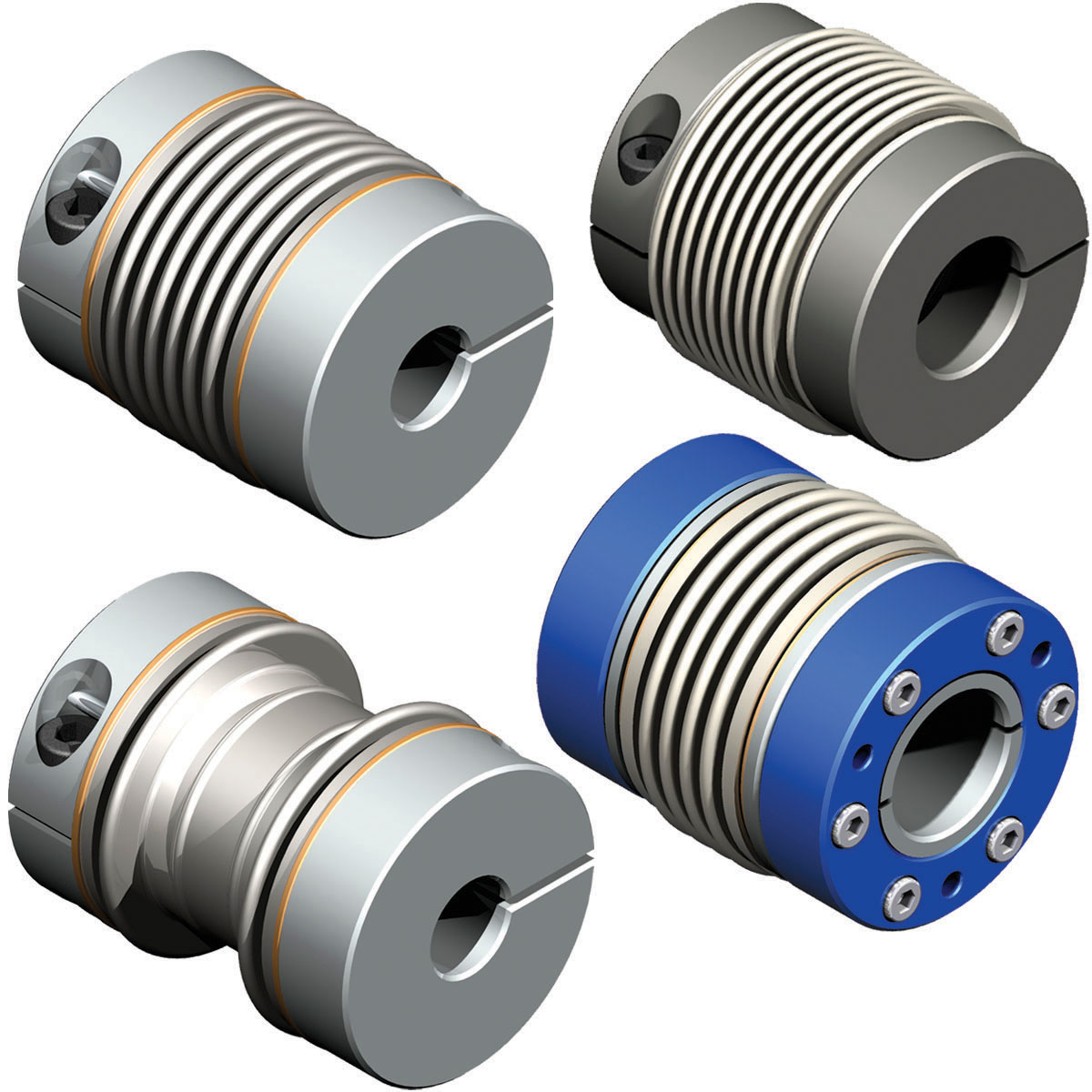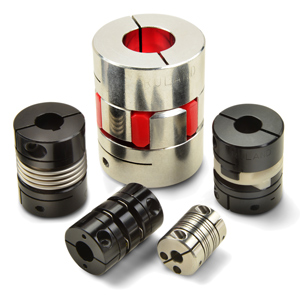Product Description
GR-65×81 GR Shaft Coupler Rigid Coupling Servo Shaft Coupling
Description of GR-65×81 GR Shaft Coupler Rigid Coupling Servo Shaft Coupling
>The material is aluminum alloy, and the middle bellows is made of stainless steel with excellent corrosion resistance
>Laser welding is used between bellows and shaft sleeve, with zero rotation clearance, suitable for CHINAMFG and reverse rotation
>Bellows structure can effectively compensate radial, angular and axial deviation
>Designed for servo motor stepper motor
>Fastening method of setscrew
Catalogue of GR-65×81 GR Shaft Coupler Rigid Coupling Servo Shaft Coupling
|
model parameter |
common bore diameter d1,d2 |
ΦD |
L |
LI |
L2 |
L3 |
N |
F |
tightening screw torque |
|
GR-16×27 |
4,5,6,6.35,7,8 |
16 |
27 |
7.5 |
2 |
8 |
13.5 |
3 |
0.7 |
|
GR-20×32 |
5,6,6.35,7,8,9,9.525,10,11,12 |
20 |
32 |
7.2 |
2.8 |
12 |
18 |
3.5 |
0.7 |
|
GR-22.5×34 |
5,6,6.35,7,8,9,9.525,10,11,12 |
22.5 |
34 |
8.05 |
2.8 |
12.3 |
20.2 |
4.5 |
1.7 |
|
GR-25×37 |
6,6.35,7,8,9,9.525,10,11,12 |
25 |
37 |
9.5 |
3 |
12 |
20.2 |
4.5 |
1.7 |
|
GR-32×42 |
8,9,10,11,12,12.7,14,15 |
32 |
42 |
8 |
4 |
18 |
27.2 |
5.5 |
4 |
|
GR-40×51 |
8,9,9.525,10,11,12,12.7,14,15,16,17,18,19,20 |
40 |
51 |
9.5 |
6 |
20 |
34.5 |
5.5 |
4 |
|
GR-55×57 |
10,11,12,12.7,14,15,16,17,18,19,20,22,24,25 |
55 |
57 |
9 |
6 |
27 |
51.9 |
6.25 |
7 |
|
GR-65×81 |
10,11,12,12.7,14,15,16,17,18,19,20,22,24,25,28,30,32,35,38 |
65 |
81 |
19.5 |
7 |
28 |
60.5 |
8.9 |
7 |
|
model parameter |
Rated torque(N.m) |
allowable eccentricity (mm) |
allowable deflection angle (°) |
allowable axial deviation (mm) |
maximum speed (rpm) |
static torsional stiffness (N.M/rad) |
weight (g) |
|
GR-16×27 |
0.8 |
0.1 |
2 |
-0.8 |
20000 |
150 |
8 |
|
GR-20×32 |
1.5 |
0.1 |
2 |
-1.2 |
18000 |
220 |
13 |
|
GR-22.5×34 |
1.8 |
0.15 |
2 |
-1.2 |
16000 |
300 |
22 |
|
GR-25×37 |
2 |
0.15 |
2 |
-1.2 |
15000 |
330 |
30 |
|
GR-32×42 |
2.5 |
0.2 |
2 |
-1.7 |
11000 |
490 |
53 |
|
GR-40×51 |
6.4 |
0.3 |
2 |
-1.7 |
10000 |
530 |
85 |
|
GR-55×57 |
12 |
0.3 |
2 |
-1.7 |
9000 |
860 |
170 |
|
GR-65×81 |
18 |
0.2 |
2 |
-1.8 |
4500 |
900 |
280 |
/* January 22, 2571 19:08:37 */!function(){function s(e,r){var a,o={};try{e&&e.split(“,”).forEach(function(e,t){e&&(a=e.match(/(.*?):(.*)$/))&&1

Comparison between Couplings with High Torsional Stiffness and Low Torsional Stiffness
Couplings used in motion control systems can vary significantly in their torsional stiffness, which is a crucial characteristic that affects their performance and behavior. Let’s explore the differences between couplings with high torsional stiffness and low torsional stiffness:
- Torsional Stiffness:
Torsional stiffness refers to the resistance of a coupling to rotational deflection or twisting under the influence of a torque. Couplings with high torsional stiffness offer greater resistance to twisting, while those with low torsional stiffness are more flexible and can accommodate more significant torsional deflections.
- Response to Torque:
Couplings with high torsional stiffness transmit torque more efficiently from one shaft to another, as they minimize torsional deflection. This characteristic is advantageous in applications where precise torque transmission and minimal power loss are essential. On the other hand, couplings with low torsional stiffness are better at absorbing shocks and torsional vibrations, making them suitable for applications where dampening is required.
- Misalignment Compensation:
Couplings with high torsional stiffness are less forgiving when it comes to misalignment between shafts. They require more accurate alignment to prevent excessive stress on the coupling and connected components. In contrast, couplings with low torsional stiffness can accommodate some degree of misalignment, reducing the need for precise alignment during installation.
- Resonance and Natural Frequency:
Couplings with high torsional stiffness have higher natural frequencies and are less prone to resonance. This characteristic is beneficial in high-speed applications where avoiding resonance is critical to prevent damaging vibrations. Couplings with low torsional stiffness, on the other hand, may have lower natural frequencies and need careful consideration to avoid resonance-related issues.
- Stress on Connected Equipment:
High torsional stiffness couplings can transfer torsional loads more directly to connected equipment, which may increase the stress on other system components. Low torsional stiffness couplings can act as vibration isolators, reducing the impact of torsional loads on connected equipment.
- Application Suitability:
The choice between high and low torsional stiffness couplings depends on the specific requirements of the application. High torsional stiffness couplings are suitable for applications where precise torque transmission and accuracy are crucial, such as CNC machines and robotics. Low torsional stiffness couplings are ideal for applications involving misalignment, shock absorption, and vibration dampening, such as printing machinery and conveyor systems.
Ultimately, the selection of a coupling with high or low torsional stiffness depends on the specific needs and performance requirements of the motion control system, ensuring optimal functionality and efficiency in the application.

Handling Angular and Axial Misalignments Simultaneously with Servo Couplings
Servo couplings are designed to handle both angular and axial misalignments simultaneously, making them versatile components for motion control systems. Here’s how they achieve this:
- Angular Misalignment: Angular misalignment occurs when the motor shaft and the driven load shaft are not perfectly aligned, resulting in an angular offset between them. Servo couplings with flexible elements, such as bellows or beam couplings, can accommodate angular misalignment without inducing excessive stress on the components.
- Axial Misalignment: Axial misalignment happens when there is a parallel displacement between the motor and the driven load along the shaft axis. Servo couplings with flexible elements allow for axial movement, absorbing any axial misalignment while maintaining torque transmission.
- Combination of Both: Servo couplings are designed to handle the combination of angular and axial misalignments simultaneously. As the flexible elements of the coupling can move in multiple directions, they can compensate for both angular and axial deviations, ensuring smooth and efficient power transmission.
The ability of servo couplings to handle both angular and axial misalignments is vital in many motion control applications. It allows for greater flexibility in design and installation, as well as improved system performance and reduced wear on the components.

What is a Servo Coupling, and Its Role in Servo Motor Systems
A servo coupling is a specialized type of coupling used in servo motor systems to connect the servo motor shaft to the driven load. Servo motor systems are widely used in various industries for precise motion control applications, where accuracy, speed, and torque control are crucial. The servo coupling plays a vital role in ensuring the efficient transfer of motion and torque from the servo motor to the driven load while compensating for misalignments between the motor and load shafts.
The main functions and role of a servo coupling in a servo motor system are as follows:
- Motion Transmission: The primary function of a servo coupling is to transmit motion from the shaft of the servo motor to the load. It connects the motor shaft to the driven load, such as a ball screw, gearbox, or another mechanical component, enabling the motor to drive and control the motion of the load precisely.
- Torque Transmission: In addition to motion, the servo coupling also transfers torque from the motor to the load. As the servo motor generates rotational force (torque), the coupling efficiently transmits this torque to the driven load, allowing it to perform its intended motion with the required force.
- Misalignment Compensation: Perfect alignment between the servo motor shaft and the load shaft is challenging to achieve in real-world applications. Any misalignment can cause detrimental effects, including increased wear, reduced performance, and premature failure. The servo coupling acts as a flexible element that can compensate for various types of misalignments, such as angular, parallel, and axial misalignments. This flexibility helps to maintain smooth and efficient power transmission even when the motor and load are not perfectly aligned.
- Damping of Vibrations: Servo motor systems often operate at high speeds and with rapid changes in direction. These dynamic movements can generate vibrations that may adversely affect the performance and lifespan of the system. A well-designed servo coupling can dampen these vibrations, providing a more stable and controlled motion to the load, reducing the risk of damage or inaccuracies.
- Backlash Minimization: Backlash refers to the play or gap between the teeth or components of the coupling when the direction of motion is reversed. Excessive backlash can result in lost motion and reduced precision. High-quality servo couplings are engineered to minimize backlash, ensuring accurate bidirectional motion control in the servo motor system.
Overall, a properly selected and installed servo coupling enhances the performance, efficiency, and reliability of servo motor systems. It protects sensitive components, such as bearings and motors, from excessive loads and vibrations, leading to extended equipment life and improved motion control capabilities.


editor by CX 2024-03-02
